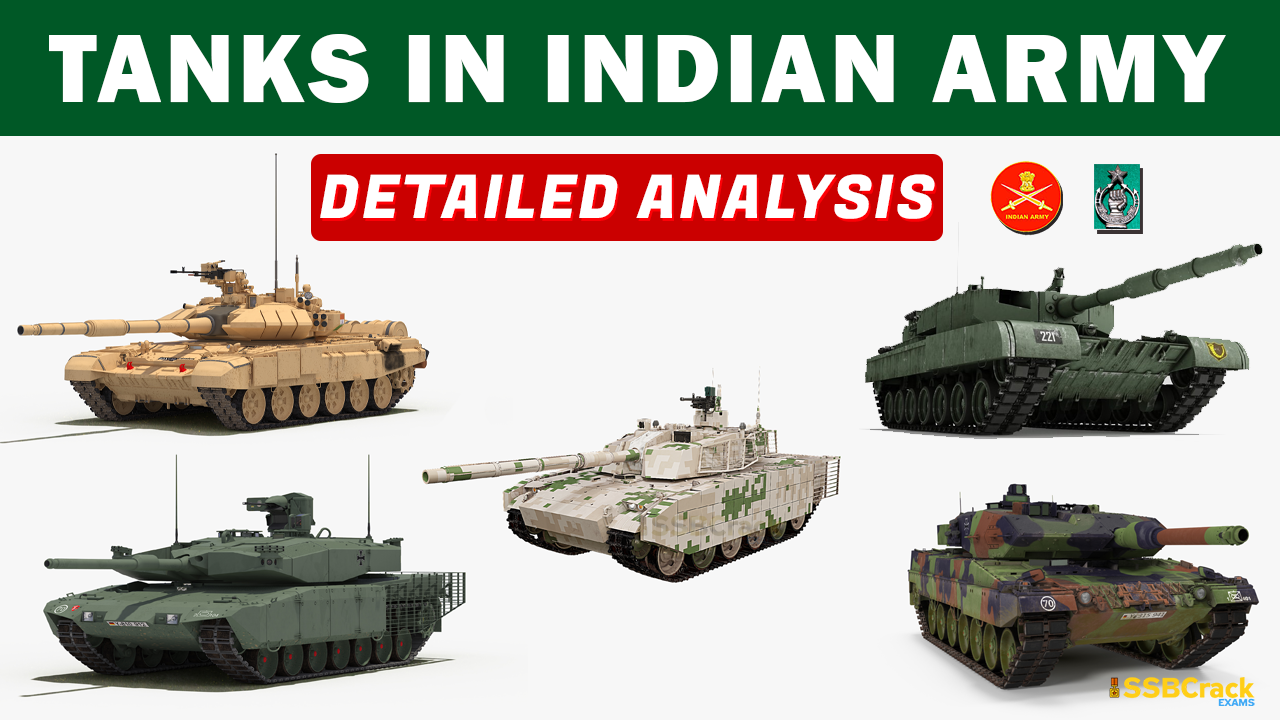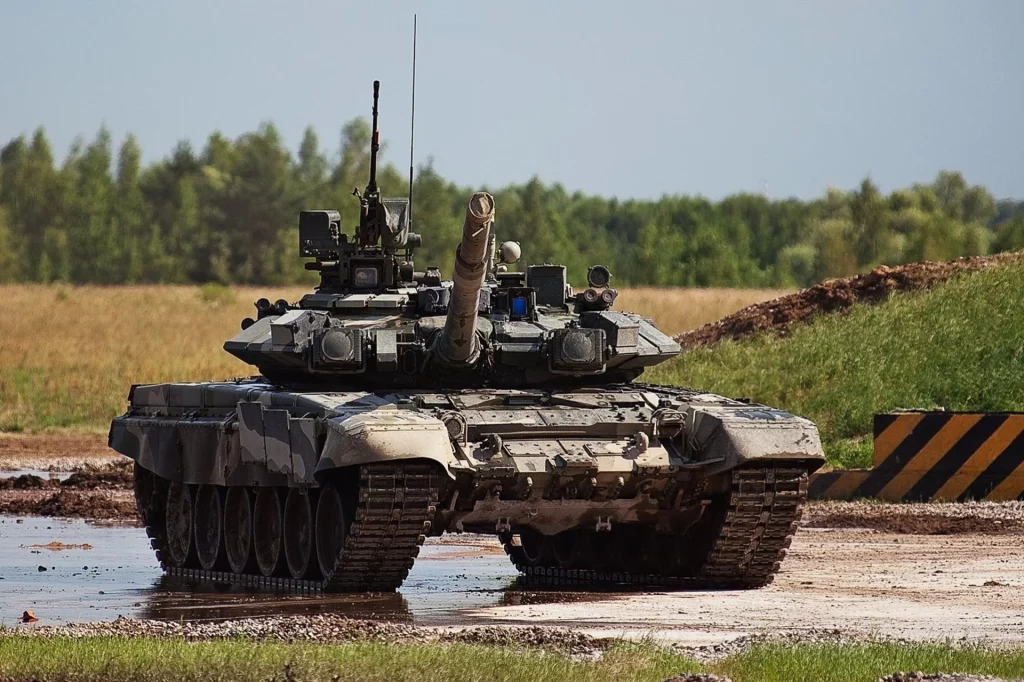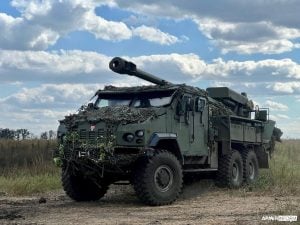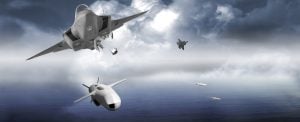The Indian Army, one of the largest and most formidable military forces in the world, has long been renowned for its impressive arsenal of battle tanks. From the iconic Arjun to the cutting-edge T-90M Bhishma, these armored behemoths have played a crucial role in shaping the nation’s defense strategy.
In this comprehensive guide, we delve into the rich history, impressive capabilities, and technological advancements of the tanks that have solidified India’s position as a global military power.
Tanks of the Indian Army
| No. | Tank Name | Manufacturer(s) | Engine Spec. |
|---|---|---|---|
| 1 | Vickers MK-VI | Vickers-Armstrong UK | 1 X Meadows ESTL 6 cylinder gasoline engine with 88 HP |
| 2 | M3 Stuart (Light tank) | American Car & Foundry Company, USA | 1 X Continental W670-9A 7-cylinder 4-cycle radial gasoline engine developing 262HP at 2400 rpm |
| 3 | M5 Stuart (Light tank) | Cadillac Division of General Motors / Massey Harris / American Car and Foundry – USA | 2 X Cadillac V8 (16 total cylinders) gasoline delivering 296HP |
| 4 | M4 Sherman (Medium tank) | American Locomotive / Detroit Tank Arsenal / Lima Locomotive among others – USA | 1 Continental R975-C1 9-cylinder gasoline fuelled engine developing 400HP at 2400 rpm |
| 5 | Centurion A41 | Leyland Motors / Vickers / Royal Ordnance Factory – UK | 1 Rolls-Royce 12-cylinder liquid cooled gasoline engine developing 650HP at 2550 rpm. |
| 6 | T-54 MBT | State Factories – USSR / Poland / Czechoslovakia / China | 1 V54 12-cylinder diesel fuelled liquid cooled engine developing 520HP driving conventional track and wheel arrangement |
| 7 | AMX-13 LT | GIAT Industries, France | 1 SOFAM Model 8-cyclinder water cooled gasoline engine developing 250HP at 3200 rpm |
| 8 | PT-76 (ALTCV) | State Arsenals, Soviet Union | 1 X V6B 6-cylinder inline water cooled diesel engine developing 240HP at 1800 rpm |
| 9 | T-55 MBT | State Factories – Soviet Union / China / Czechoslovakia / Poland / Romania | 1 V55 diesel fuelled engine developing 80HP driving the conventional track and wheel arrangement |
| 10 | Vickers MBT (VIJAYANTA) | BAE Systems Land Systems – UK / Avadi Company – India | 1 Detroit Diesel 12V-71T turbocharged diesel fuelled engine developing 720HP at 2500 rpm |
| 11 | BMP-1 (Boyevaya Mashina Pekhoty) LT/IFV | State Factories – Soviet Union / Czechoslovakia / India / China | 1 UTD20 6-cylinder inline water cooled diesel fuelled engine developing 300HP at 2000 rpm |
| 12 | BMD-1 (Boyevaya Mashina Desanta) AALT/IFV | Volgograd Tractor Plant – Soviet Union | 15D-20 6-cylinder liquid cooled diesel engine developing 241HP at 2600 rpm |
| 13 | T-72 (Ural) MBT (AJEYA) | Various – Soviet Union/Russia / Poland / Czechoslovakia / India / Iran | 1 air-cooled multi-fuelled diesel engine at 840HP at 2000 rpm |
| 14 | BMP-2 IFV | Kurganmashzavod – Soviet Union | 1 UDT 6-cylinder supercharged diesel fuel developing 400HP at 2600 rpm |
| 15 | BMD-2 AALV/IFV | Volgograd Tractor Plant – Soviet Union | 1 5D-20 liquid cooled 6-cylinder diesel engine developing 241HP at 2600 rpm |
| 16 | T-90 MBT | Uralvagonzavod – Russia | 1 V84, V92 or V96 12-cylinder diesel fuelled engine can develop 840HP, 950HP and 1250HP respectively |
| 17 | DRDO Tank EX Karna MBT | DRDO | Cancelled Tank |
| 18 | DRDO Arjun MBT | DRDO / CVRDE / Heavy Vehicles Factory – India | 1 MTU 838 Ka 501 12-cylinder liquid cooled turbocharged diesel engine developing 1400HP at 2500 rpm |
| 19 | T-90M Bhishma MBT | Heavy Vehicles Factory – India | 1 V-model 12-cylinder diesel engine developing 1130HP |
The Vickers Lineage: Tracing the Roots of Indian Tank Development
The Indian Army’s tank heritage can be traced back to the early 20th century, with the introduction of the Vickers Mk VI light tank in the 1930s. This British-designed vehicle, renowned for its robust construction and reliable performance, was one of the first tanks to be inducted into the Indian Army. The Vickers Mk VI served as a crucial reconnaissance and support platform, laying the foundation for the country’s burgeoning armored capabilities.
The Vickers Mk VI: A Pioneering Light Tank
The Vickers Mk VI, with its crew of three and a top speed of 52 km/h, was a versatile and maneuverable platform that proved its worth in various combat scenarios. Equipped with a 13mm machine gun, this light tank was well-suited for scouting and light skirmishing operations. Its introduction marked a significant milestone in the Indian Army’s transition towards a more modern and mechanized force.
The Vijayanta: A Homegrown Vickers Variant
Building upon the legacy of the Vickers Mk VI, the Indian Army later acquired the Vickers MBT, also known as the Vijayanta. This tank, co-developed by the UK’s Vickers-Armstrong and India’s Avadi Company, combined the proven Vickers design with indigenous manufacturing capabilities. The Vijayanta, with its 43-ton weight and 720 horsepower Detroit Diesel engine, served as a reliable and capable main battle tank in the Indian arsenal for decades.
10 Most Powerful Main Battle Tanks of the World
The American Influence: Tanks from the United States
Alongside the British-influenced tanks, the Indian Army also integrated a range of American-designed vehicles into its inventory. These tanks, renowned for their firepower and resilience, have played a significant role in shaping the country’s armored capabilities.
The M3 Stuart and M5 Stuart: Nimble Light Tanks
The M3 Stuart and M5 Stuart, American-built light tanks, were among the earliest US-derived platforms to be inducted into the Indian Army. These agile and maneuverable vehicles, with their 14-ton and 17-ton weights respectively, were well-suited for reconnaissance and support roles. Their ability to traverse challenging terrain and their relatively small size made them valuable assets in the Indian Army’s arsenal.
The Iconic M4 Sherman: A Workhorse of World War II
Perhaps the most renowned American tank in the Indian Army’s inventory is the M4 Sherman. This medium tank, with its 31-ton weight and 400 horsepower engine, was a mainstay of the Allied forces during World War II. The M4 Sherman’s impressive firepower, armor protection, and reliability made it a formidable presence on the battlefield, and its legacy lives on in the Indian Army’s proud history.
The Soviet Influence: Tanks from the Eastern Bloc
The Indian Army’s tank arsenal has also been significantly influenced by the Soviet Union and its successor states. These Eastern Bloc-designed tanks have played a crucial role in bolstering India’s armored might.
The T-55: A Reliable and Versatile Main Battle Tank
One of the most ubiquitous tanks in the Indian Army’s inventory is the T-55. This medium tank, developed by the Soviet Union in the late 1940s, boasts a 40-ton weight and a 520 horsepower diesel engine. The T-55’s combination of firepower, armor, and mobility made it a reliable and versatile platform that served in various conflicts and operations.
The T-72: A Workhorse of the Indian Arsenal
Another iconic Soviet-designed tank in the Indian Army’s arsenal is the T-72. This main battle tank, with its 51-ton weight and 840 horsepower diesel engine, has been a mainstay of the Indian armored forces for decades. The T-72’s impressive firepower, armor protection, and mobility have made it a formidable presence on the battlefield, cementing its status as a crucial component of India’s tank inventory.
The T-90: India’s Cutting-Edge Main Battle Tank
More recently, the Indian Army has integrated the T-90 main battle tank into its arsenal. Developed by Russia, the T-90 boasts a 61-ton weight and a powerful 1,130 horsepower diesel engine. This tank, known as the T-90M Bhishma in Indian service, incorporates advanced technologies and features that enhance its firepower, protection, and mobility, making it a formidable asset in the modern battlefield.
Top 10 Missiles of Indian Armed Forces
Homegrown Innovations: The Arjun Main Battle Tank
While the Indian Army has embraced a diverse range of foreign-designed tanks, it has also taken significant strides in developing its own indigenous main battle tank – the Arjun. This homegrown marvel, designed and produced by the Defence Research and Development Organisation (DRDO) and the Combat Vehicles Research and Development Establishment (CVRDE), represents India’s commitment to self-reliance in the field of armored warfare.
The Arjun: A Technologically Advanced Platform
The Arjun main battle tank, with its 65-ton weight and 1,400 horsepower engine, boasts impressive firepower, armor protection, and mobility. Equipped with a 120mm rifled gun and a host of advanced features, including advanced optics, fire control systems, and composite armor, the Arjun has proven its capabilities in various trials and exercises. Its development has been a testament to India’s growing expertise in tank design and manufacturing.
Challenges and Advancements
The Arjun’s journey has not been without its challenges, as the program has faced delays and setbacks over the years. However, the Indian Army and the DRDO have remained committed to the tank’s development, continuously improving its design and addressing any shortcomings. The Arjun’s evolution, marked by the introduction of newer variants and upgrades, has positioned it as a formidable contender in the Indian Army’s tank arsenal.
The Future of Indian Tank Warfare
As the Indian Army continues to modernize and enhance its armored capabilities, the future of tank warfare in the country looks promising. The development of advanced platforms, such as the IAEME Atharva, a proposed main battle tank, and the ongoing upgrades and improvements to existing tanks, indicate India’s unwavering commitment to maintaining a strong and technologically superior tank force.
The IAEME Atharva: A Glimpse into the Future
The IAEME Atharva, a main battle tank proposal currently under development, represents the Indian Army’s vision for the next generation of armored vehicles. With its advanced features and cutting-edge technologies, the Atharva aims to provide the Indian Army with a tank that can effectively counter emerging threats and maintain a decisive edge on the battlefield.
Continuous Upgrades and Modernization
Alongside the development of new platforms, the Indian Army has also been actively upgrading and modernizing its existing tank fleet. This includes the integration of advanced sensors, fire control systems, and protection measures to enhance the capabilities of tanks like the T-90M Bhishma and the Arjun. These ongoing efforts ensure that the Indian Army’s tank inventory remains at the forefront of modern armored warfare.
List of Surface to Surface Missiles Indian Has
Conclusion
The tanks of the Indian Army stand as a testament to the nation’s unwavering commitment to military might and technological advancement. From the pioneering Vickers Mk VI to the cutting-edge T-90M Bhishma and the homegrown Arjun, these armored behemoths have played a pivotal role in shaping India’s defense strategy and securing its position as a formidable regional and global power. As the Indian Army continues to invest in the development and modernization of its tank arsenal, the future of Indian tank warfare looks poised to reach new heights, solidifying the country’s status as a dominant force in the realm of armored warfare.




















